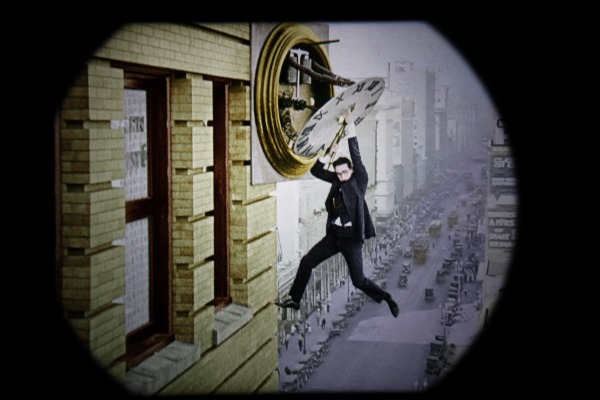The 2D-to-3D conversion business is booming for San Diego-based Legend3D, which recently got a late order to convert about 30-minutes of “The Green Hornet,” but a couple of the growth areas now are in Blu-ray and TV commercials.
Legend3D recently converted the first three Shrek movies for a release on Blu-ray with Samsung products, and the company has been getting requests for TV commercials, said founder and COO/CTO Barry Sandrew. Legend3D and president Rob Hummel showcased some of its test ads for the media this week.
A 60-second spot takes about a week to convert at a cost of about $100,000, Sandrew said, which is not a lot when you’re talking about $2 million spots in the Super Bowl, he noted.
But overall, TV conversion is much less forgiving than theatrical, in part because the image is much brighter. And animation is more challenging than live-action. So that made the conversion of the Shrek movies harder to begin with. Even more challenges materialized when Legend3D learned that DreamWorks Animation had saved only the 2D renders of the animation.
Those kinds of obstacles can make converting catalog titles and anything for TV as time-consuming and costly as theatrical because the process and quality control is the same for all media, Sandrew said.
The Shrek conversions, which looked as good projected on a cinema screen as any commercially released film, took about eight weeks each.
Legend3D also did the 3D conversion on many scenes in last year’s “Alice in Wonderland” from Tim Burton, created the first digital 3D commercial for movie theaters (“Skittles Transplant”), and the opening credits and interstitials for the 3D episode of “Chuck” that followed the Super Bowl a couple years ago.
Recently the company has been doing a lot of what Sandrew calls “911” work for studios on films that ran way behind in the conversion process and needed help to meet release dates, such as “The Green Hornet.” That “911” work can cost on the high side of what Sandrew says is about $30,000 – $200,000 per minute of converted film. He makes it clear that Legend3D has not been involved with any of the recent films that took a beating from the media and the industry about poor 2D-to-3D conversion.
Despite that bad rap that some theatrical conversions have taken, Sandrew and Hummel insist that conversion can be as high quality or even superior to shooting in 3D, and it always offers far more flexibility and creative freedom, and usually less expensive, they say. Conversions allow for setting convergence points to any point, whereas shooting limits you to decisions made during the filming, which may not be the settings filmmakers will he satisfied with during editing process.

Legend3D also showed a 3D and colorized version of the iconic four-minute scene from Harold Lloyd’s 1923 silent black-and-white film “Safety First,” which will be showcased at the International 3D Society Creative Arts Awards on Feb. 9. At the awards, James Cameron will be named the 2011 recipient of the Harold Lloyd Award, which recognizes an individual’s commitment to 3D storytelling and the embodiment of Lloyd’s vision and passion for films.
“The tasteful colorization and 3D conversion that Legend3D has performed on my grandfather’s ‘Safety Last’ clip has given it new life, … for audiences old and new, preserving the magic and dignity of the original film,” said Lloyd’s granddaughter Suzanne Lloyd.
“Watching vibrant, colorful images jump off the screen in 3D from a clip that was originally released as a silent black-and-white film shot in 2D, showcases how technology and high-quality conversion can heighten an audience’s experience,” Sandrew said. “It really positions Legend3D as a leader in the conversion industry and is a personal achievement as ‘Safety Last,’ among others in the entertainment world, has always been such an influential film to me.”
About 65% of the underlying conversion process of Legend3D was derived from the Colorization process, which Sandrew invented in 1987. He then enhanced it in 2000 with advances in digital technology that semi-automated the process, and then applied that technology to develop a 2D-to-3D conversion process in 2005.
Sandrew said the demand for colorization of black-and-white films and TV shows has increased significantly, especially in Europe from where Sandrew says he has turned down about 3o orders because the profit margin isn’t as high as 3D conversion.
Legend 3D has hired hundreds of people in the San Diego area — 275 last year, with plans for another 150 by May. Including the studio he opened in India ten years ago, Sandrew’s company employs about 1,100 people.
— By Scott Hettrick
